Below is a collection of 20 actionable ways to weave a productive workspace into the same four walls where you sleep, each kept to a crisp 100-120 words so you can scan quickly and start planning.
1. Bedroom Office Nightstand-Swap Workstation
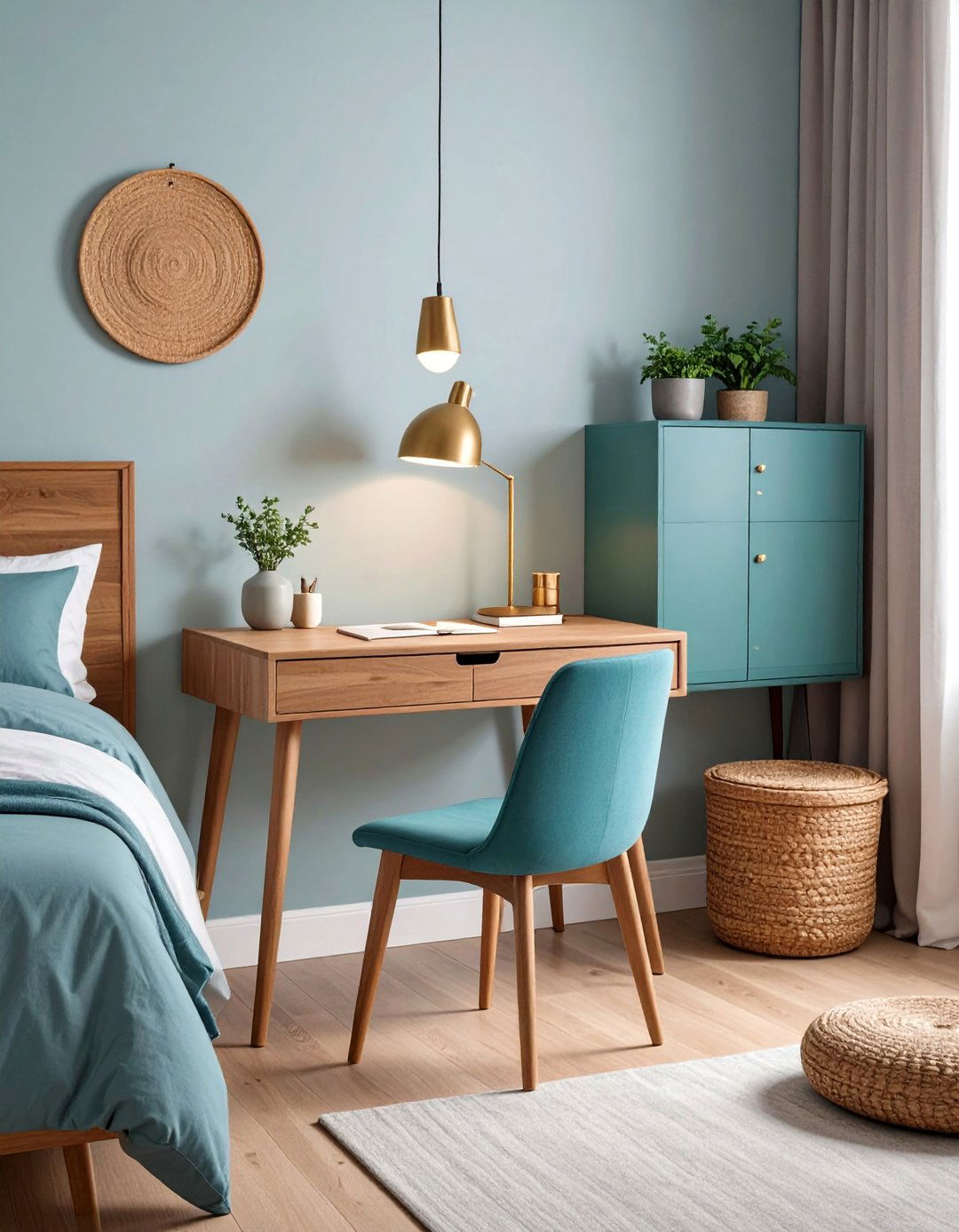
A recent interiors guide notes that trading a bulky nightstand for a 30-inch writing table recovers two square feet without encroaching on circulation space, instantly converting wasted bedside real estate into a sleek workstation. Choose a lamp with a USB base so your charging spot doubles as task lighting, and hang a narrow, wall-mounted drawer just under the tabletop for pens and journals to keep surfaces clutter-free. Add a slender stool that slips completely beneath the desk at night; the easy tuck-away motion maintains that restful bedroom sight-line while ensuring you never trip over chair legs during late-night water runs. Finish with a small cork coaster to spare your laptop from water-glass rings.
2. Bedroom Office Window-Facing Productivity Nook
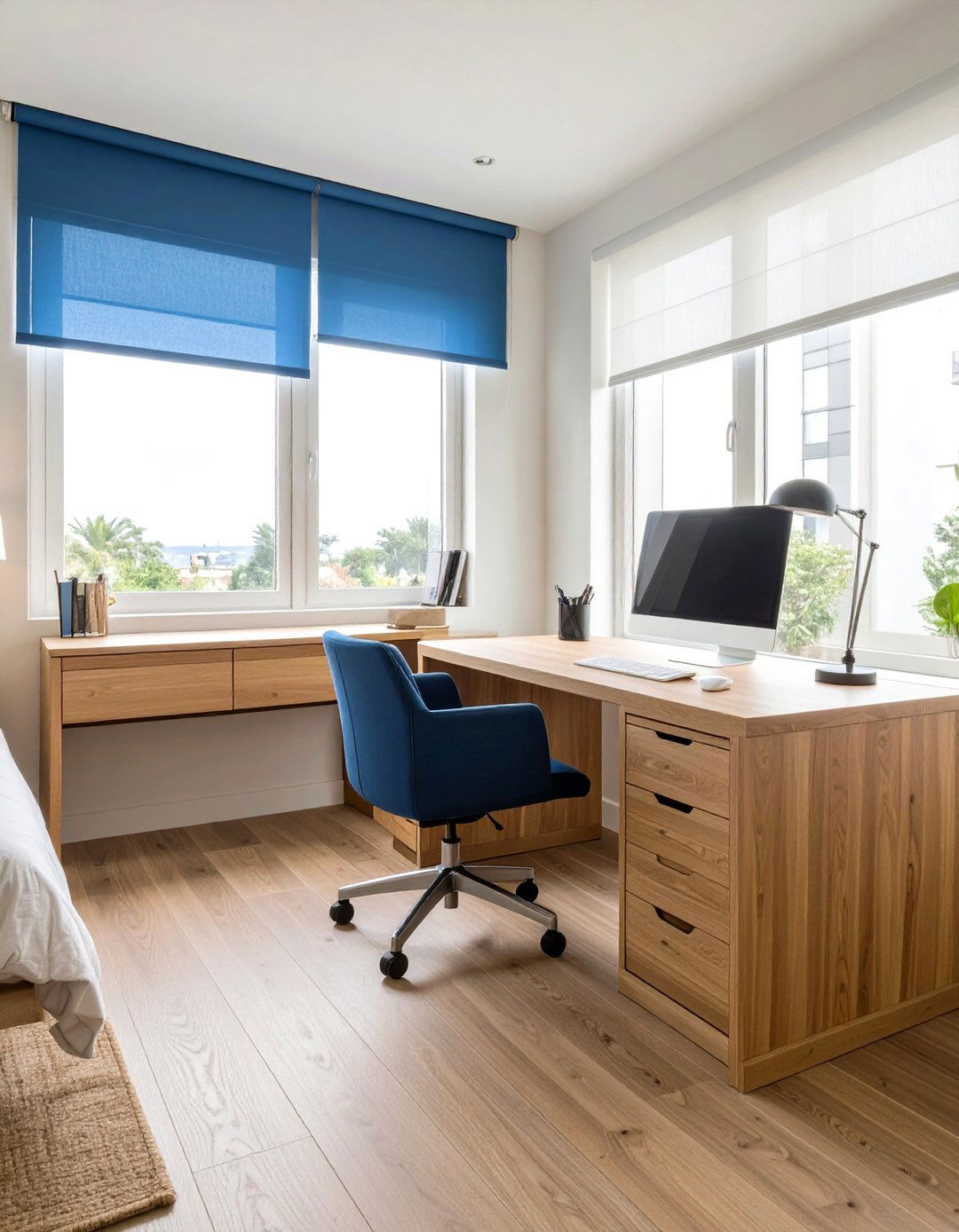
Positioning the desk directly in front of a bedroom window increases exposure to daylight, a proven productivity booster, and frees the remaining wall for headboard art instead of equipment. Mount the monitor on an adjustable arm so glare is managed with a quick tilt and enjoy natural eye-rest breaks by looking outdoors every 20 minutes. Sheer roller shades diffuse harsh midday light without darkening the whole room, and a compact footrest beneath the desk prevents dangling-leg fatigue when the sill height places your seat slightly higher than normal. Store stationery in a fabric caddy hooked to the window apron to avoid piling items on the sill itself.
3. Bedroom Office Murphy-Bed Command Center
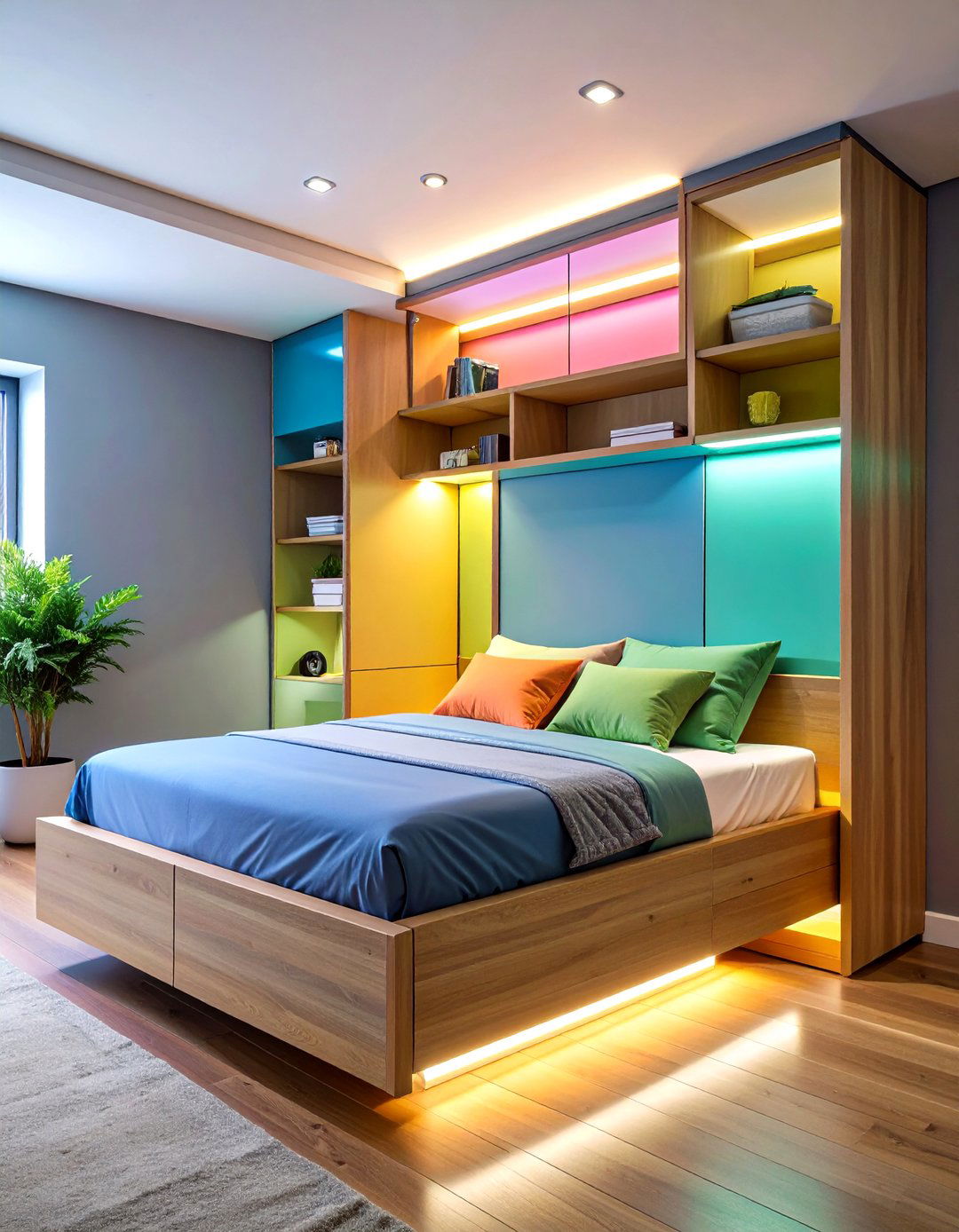
Folding beds with integrated desks let a single wall serve double duty—work zone by day, sleep sanctuary by night. Modern piston lifts make the transition almost effortless; you simply lock the laptop shelf, lift, and the mattress hides vertically while the work surface pivots to stay level, meaning papers can remain in place. Choose models with built-in LEDs so no table lamp is required, and use the cavity behind the headboard to route power strips, keeping cords invisible when the bed is down. Add a recessed pull-out drawer for pillows to eliminate the need for extra baskets that would otherwise eat floor space.
4. Bedroom Office Floating-Shelf Desk
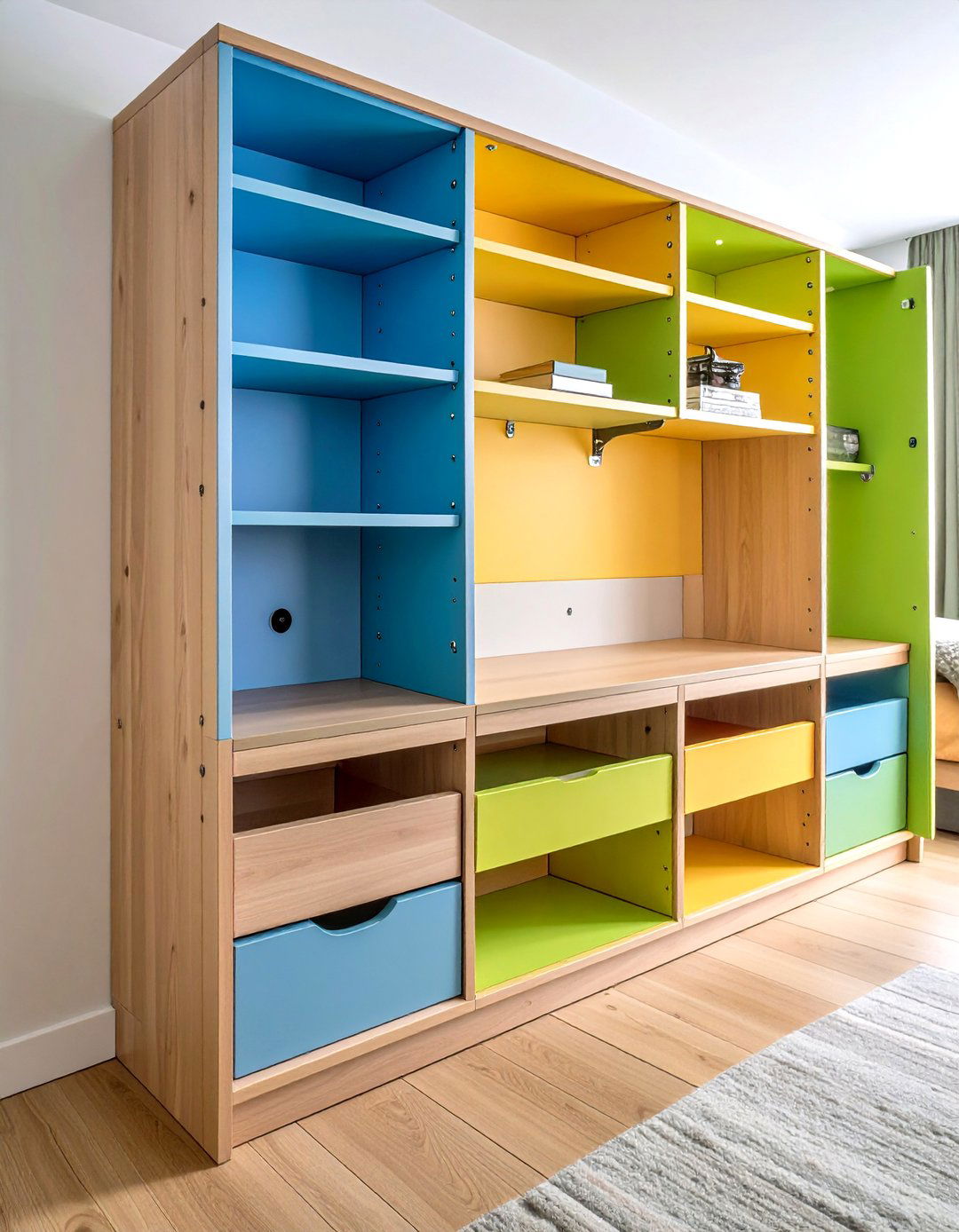
A wall-mounted folding shelf uses sturdy brackets to support full-laptop weight yet folds flat to just two inches thick when closed, clearing the room for yoga or stretching. Mount it 29 inches from the floor for standard desk height, or 40 inches if you prefer a standing perch with a barstool. Hide a slim surge protector behind the front lip and feed charging cables through an oval grommet before screwing the shelf in place so wires disappear entirely. Paint the underside the same tone as the wall to make the shelf vanish when shut, preserving the calming bedroom palette.
5. Bedroom Office Corner-Cove Setup
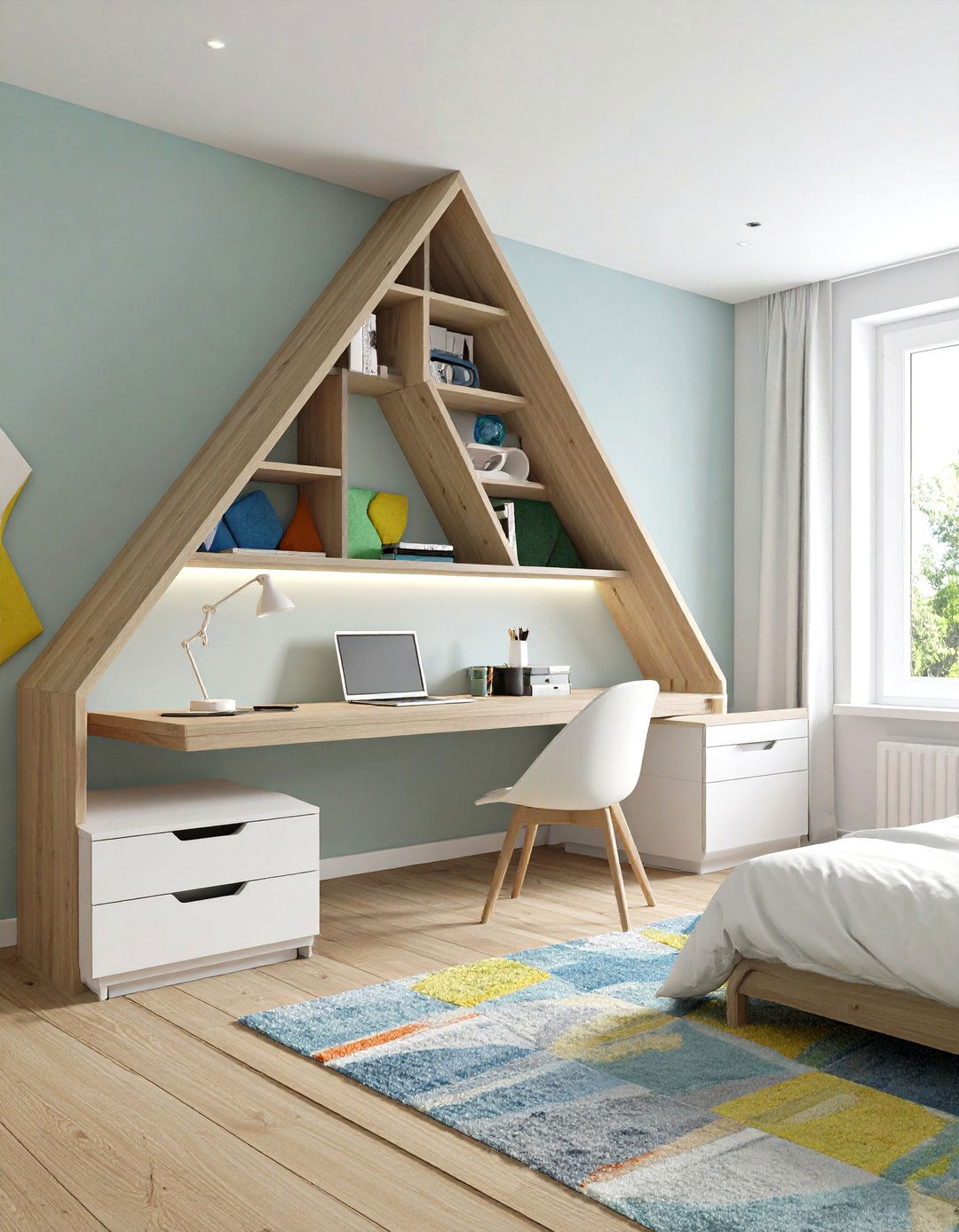
Tucking a triangular desk into the room’s least-used corner leaves bed pathways untouched while providing two walls for shelving above and drawer towers below. Use floating corner shelves staggered upward to display books and noise-absorbing décor like felt art panels, and mount puck lights under the lowest shelf for direct, shadow-free illumination. A small wheeled file pedestal stores beside the desk by day and slides under the bed at night. Completing the triangle with a soft corner rug ensures your feet land on plush pile instead of cold laminate during early-morning email sessions.
6. Bedroom Office Compact-Ergonomic Chair Choice

A recent chair roundup recommends slim-profile task seats with self-adjusting lumbar so they disappear visually yet still support all-day work. Look for models under 25 inches wide; anything broader peppers the room with bulky arms that clash with nightstand lines. Swivel casters should lock to keep the chair from drifting into the bed frame, and breathable mesh backs double as drying racks for gym hoodies to save closet rods. Choose a muted upholstery tone that echoes the duvet to blend chair and bedding into one cohesive palette.
7. Bedroom Office Sound-Softening Library Wall
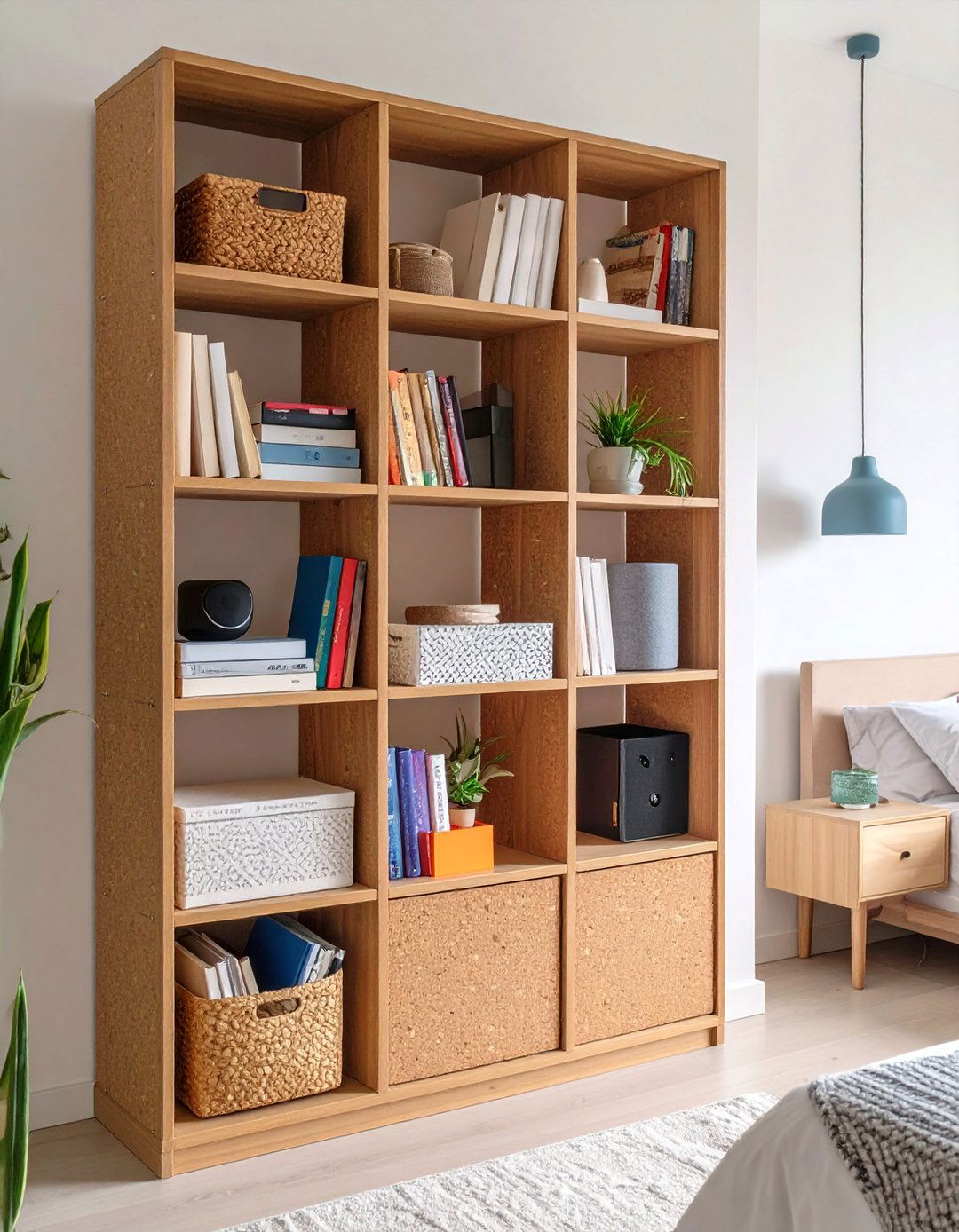
Tall bookcases loaded with paperbacks along the wall shared with a hallway increase wall mass and cut noise transfer by several decibels, creating a quiet work pod inside the bedroom office. Arrange the shelves so the heaviest books—textbooks or photo albums—sit at ear height to block chatter frequency ranges. Top the cases with cork panels for pinning reminders and absorbing echo, and slip a small Bluetooth speaker behind a row of novels to play white noise that masks household clatter. The visual of stacked spines also adds a cozy study vibe that transitions naturally into bedtime reading.
8. Bedroom Office Biophilic Green Pocket
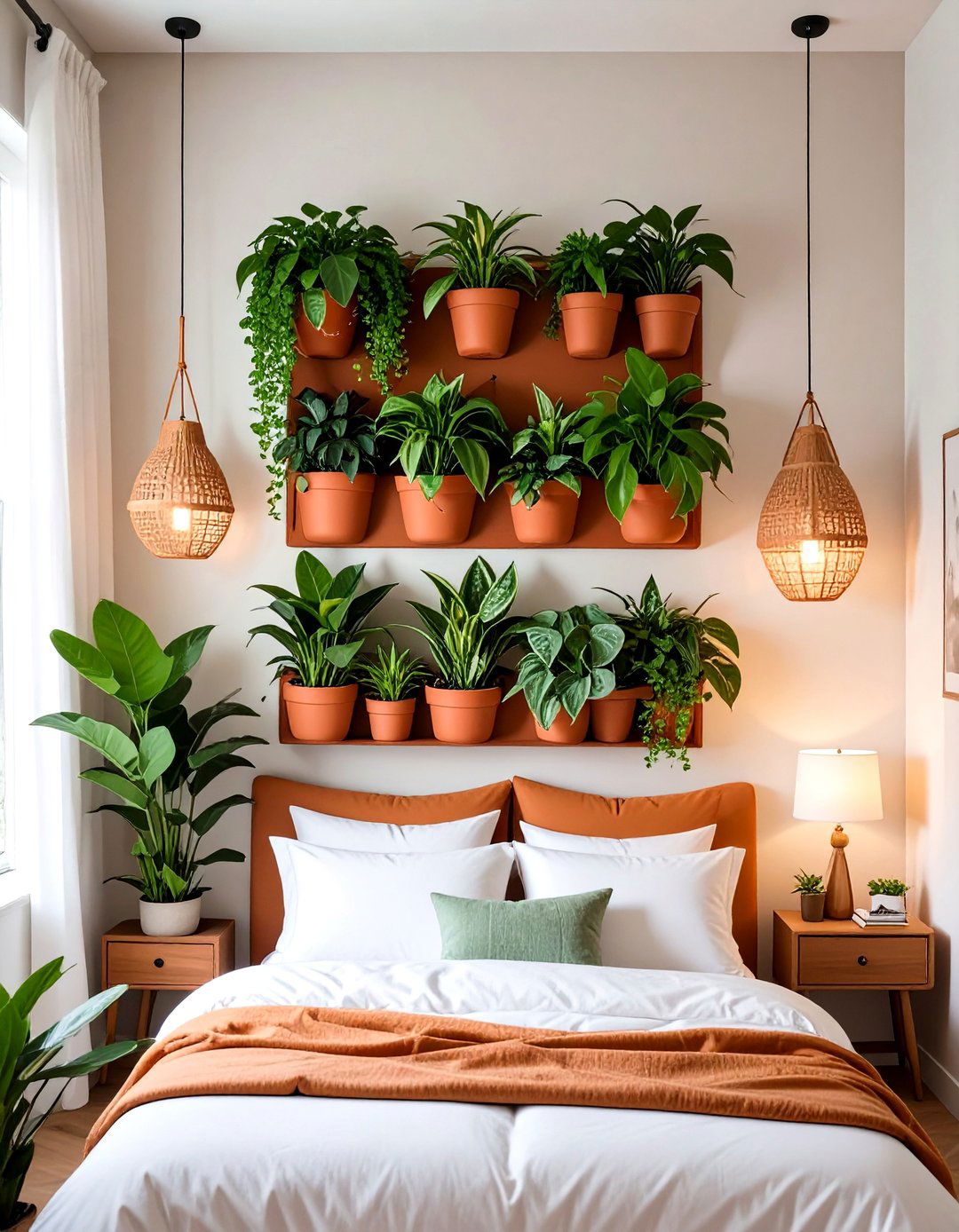
Integrating live plants between monitor and bed introduces humidity and lowers stress indicators, according to biophilic design advocates. Use narrow terracotta wall pockets for trailing pothos above the desk, and a single waist-high snake plant on the floor to purify air without needing daily water. Position foliage where it remains in peripheral vision while typing; that soft green tone signals calm and helps prevent screen fatigue. A small grow-bulb in a clip-on lamp ensures consistent light, eliminating the need to move plants outside each weekend.
9. Bedroom Office LED-Strip Task Glow
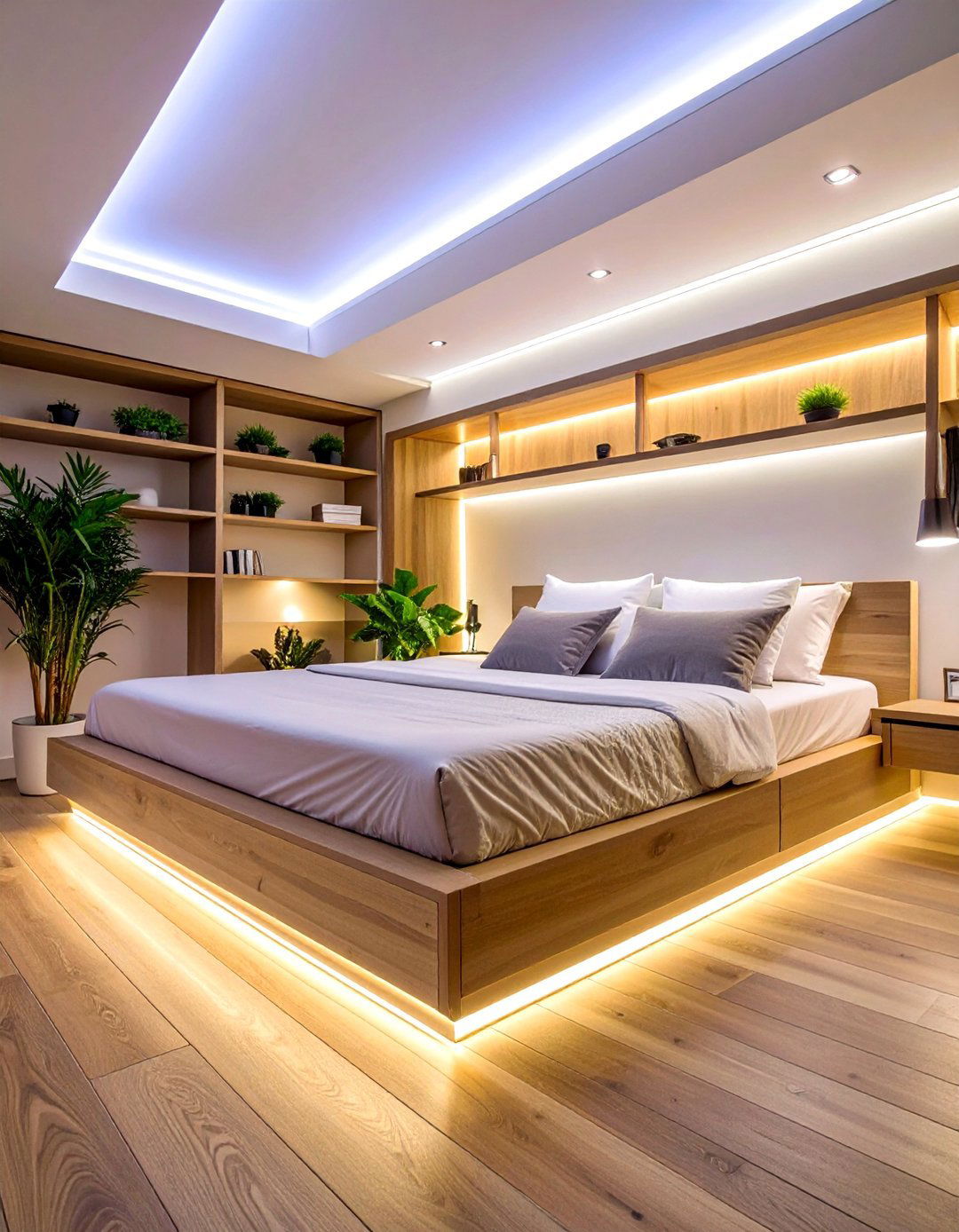
Modern LED light strips adhere like tape under shelves, vanish when off, and cost less than a take-away lunch for ten feet of illumination. Stick a strip to the underside of the top shelf so keys illuminate the keyboard without spilling bright beams onto the pillow. Choose models with memory dimmers so brightness resets automatically each dawn-session, and route the skinny cord through the bracket channel to hide wiring. Warm-white temperatures (2700-3000 K) mimic bedside lamps, keeping circadian rhythm undisturbed when you shut the laptop and slide into bed moments later.
10. Bedroom Office Hidden Cable Raceway
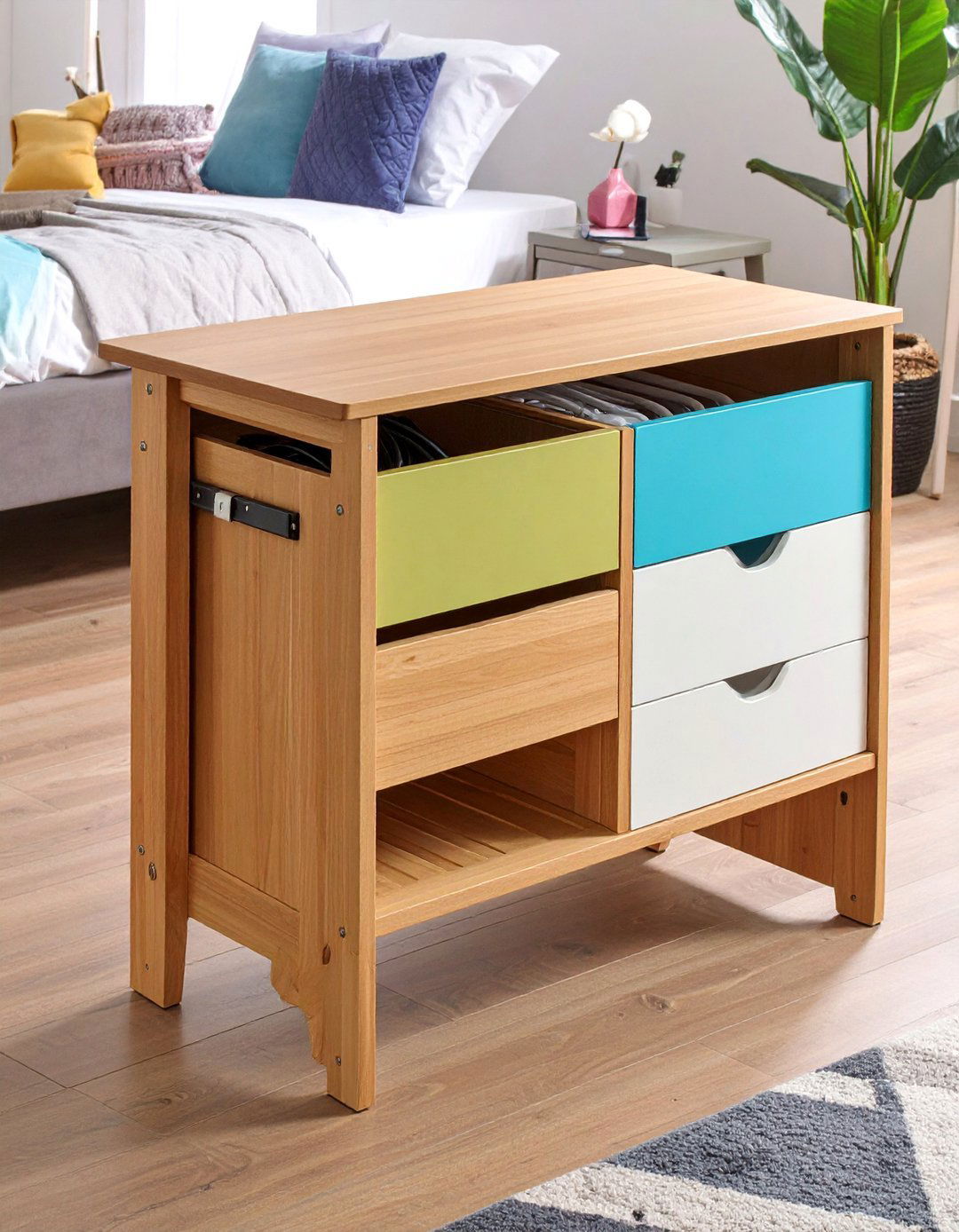
Organised wires can boost focus by removing visual distractions and simplifying troubleshooting, especially in multi-device households. Install an under-desk cable tray; most snap to the desktop in two screws and hold power strips, chargers, and excess cord length. Pair it with stick-on raceways that run down the desk leg into a wall outlet so no wires drape across the carpet where toes can catch. Elastic-loop fasteners corral extra phone cables and stow neatly in the tray, ensuring the bedroom floor remains serene and hazard-free.
11. Bedroom Office Under-Bed Supply Drawer
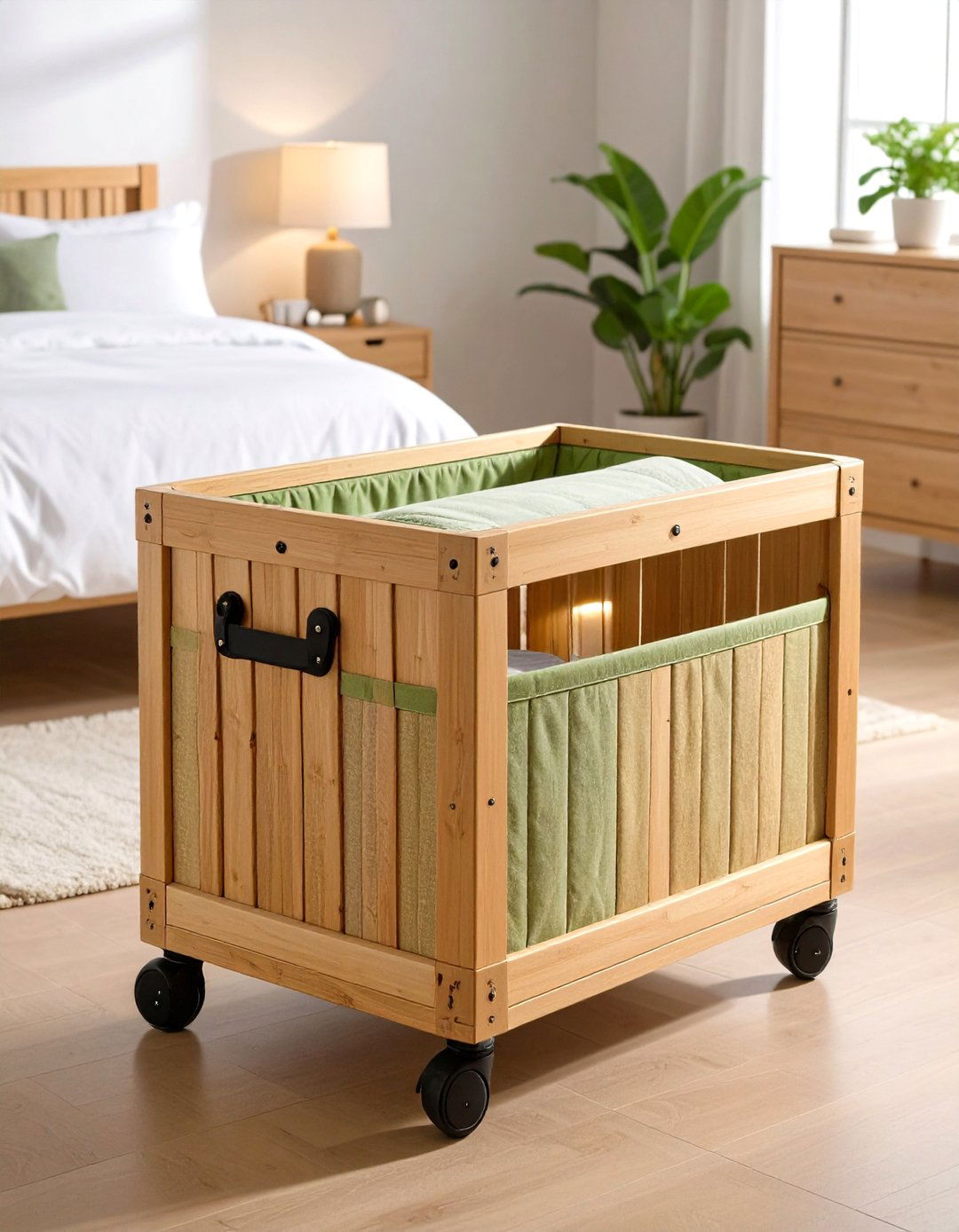
Rolling fabric bins with bamboo frames store reams of paper, extra chargers, and the scanner you rarely use, capturing the six-inch void beneath most beds. Label the pull handles so you can grab “Tech” or “Stationery” in seconds, and line the interior with cedar sheets to prevent mildew in humid climates. Integrate low-profile wheels if your flooring is carpeted to avoid snagging fibers, and add a small battery-powered motion light so you don’t need to flick on the ceiling lamp at midnight when inspiration strikes.
12. Bedroom Office Color-Psychology Palette

Cool blue-green walls foster concentration, balanced mood, and lower heart rate during extended work sessions. Paint just the desk alcove in a desaturated teal and leave the rest of the bedroom neutral, creating a subtle visual cue that defines “work zone” from “rest zone” without physical barriers. Echo the accent color in a lumbar pillow and a single planter to tie zones together, then add a brass desk lamp for a pop of warm metallic that keeps the palette from feeling clinical.
13. Bedroom Office Curtain-Divider Zoning

Hanging a ceiling-track curtain or lightweight folding screen along the bed’s edge creates an instant office alcove and hides morning paperwork from sight when it’s time to sleep. Opt for acoustic fabric to muffle keyboard clicks, and choose a tone that matches the duvet so, when pulled, the divider resembles an oversized headboard. Installing a tension rod avoids drilling—ideal for renters—and sliding hooks let you remove the curtain for laundering or redecorating within minutes.
14. Bedroom Office Wall-Mounted Monitor Arm
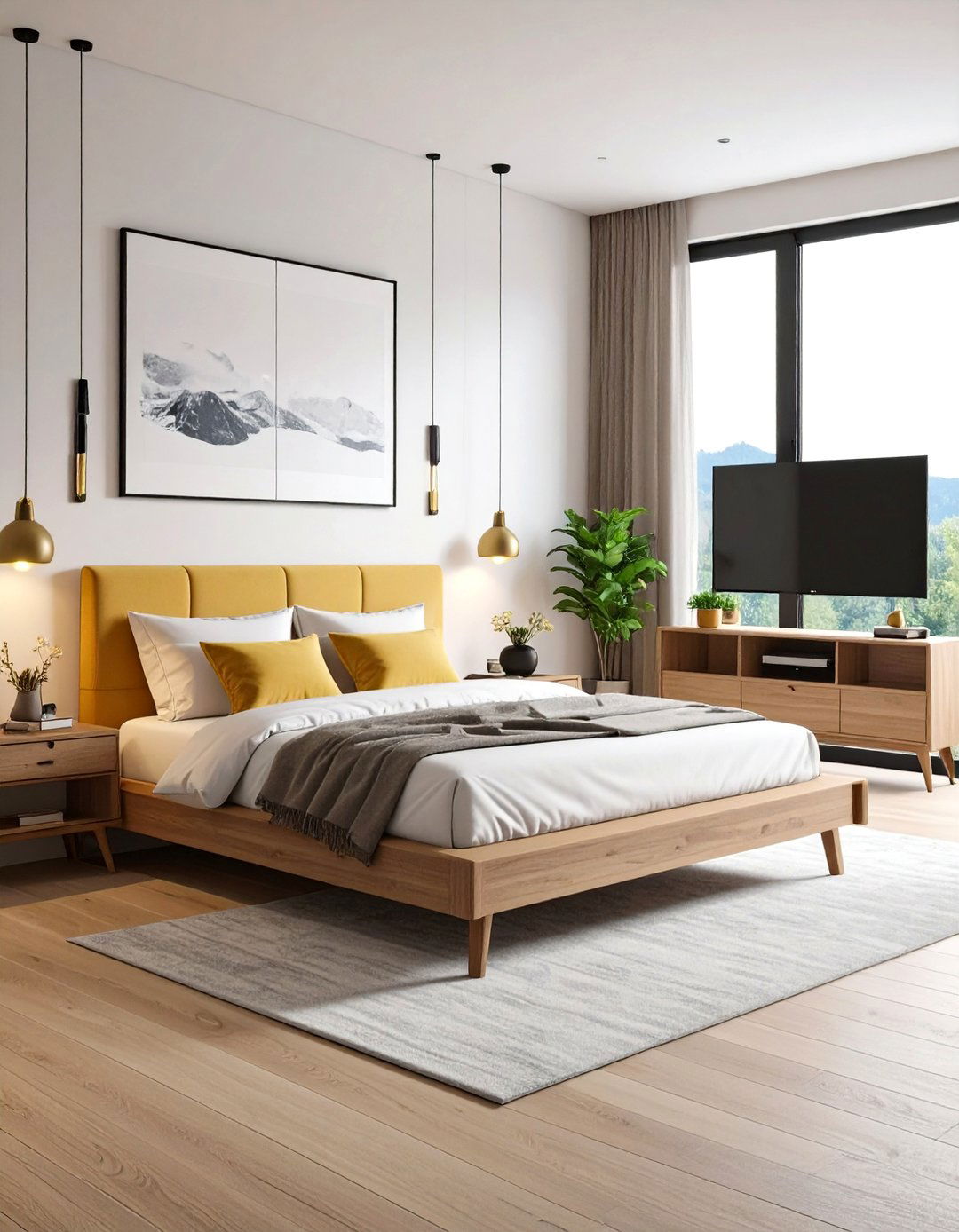
A wall-anchored arm frees up the entire desk surface for notebooks and coffee, folding flat when you want a cleaner bedroom line of sight. Pick an arm with internal cable routing so only a single cord flows down to a cable raceway. Mount it at eye level while seated, with the center of the screen about 17 inches above the desktop, reducing neck strain. When the monitor swings flush to the wall, the desk transforms into a vanity or reading table—perfect for multifunctional bedroom days.
15. Bedroom Office Sit-Stand Lift Platform
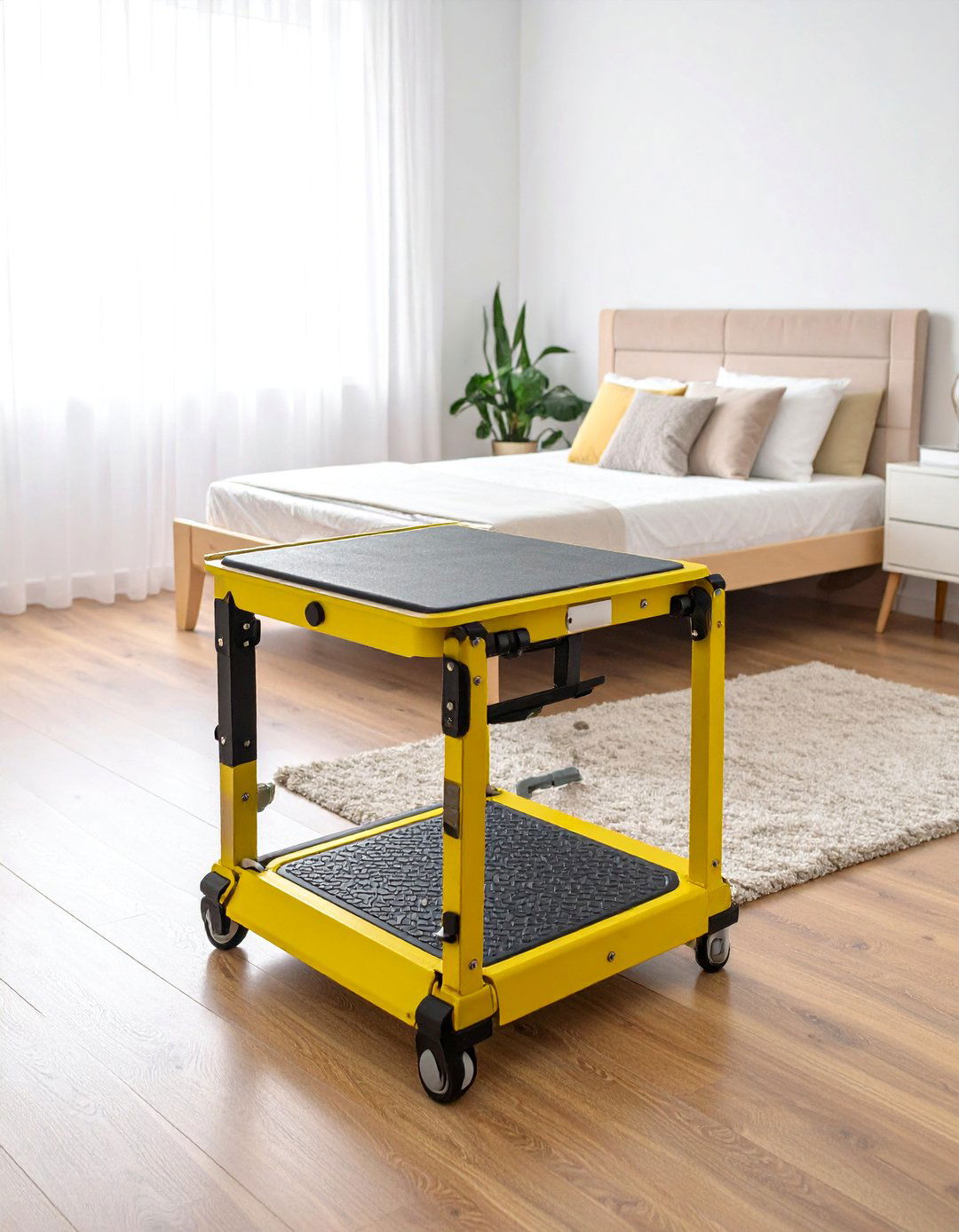
Compact electric desks with telescoping legs lift from 28 to 48 inches, encouraging posture changes without adding bulk. If you already own a fixed desktop, retrofit it with a slim riser that stores flat under the bed; most support up to 33 pounds and rise in fifteen seconds. Use programmed height presets labeled “Morning,” “Afternoon,” and “Drafting” to reduce decision fatigue, and top the platform with a felt desk pad that doubles as a standing wrist cushion.
16. Bedroom Office Pegboard Vertical Storage
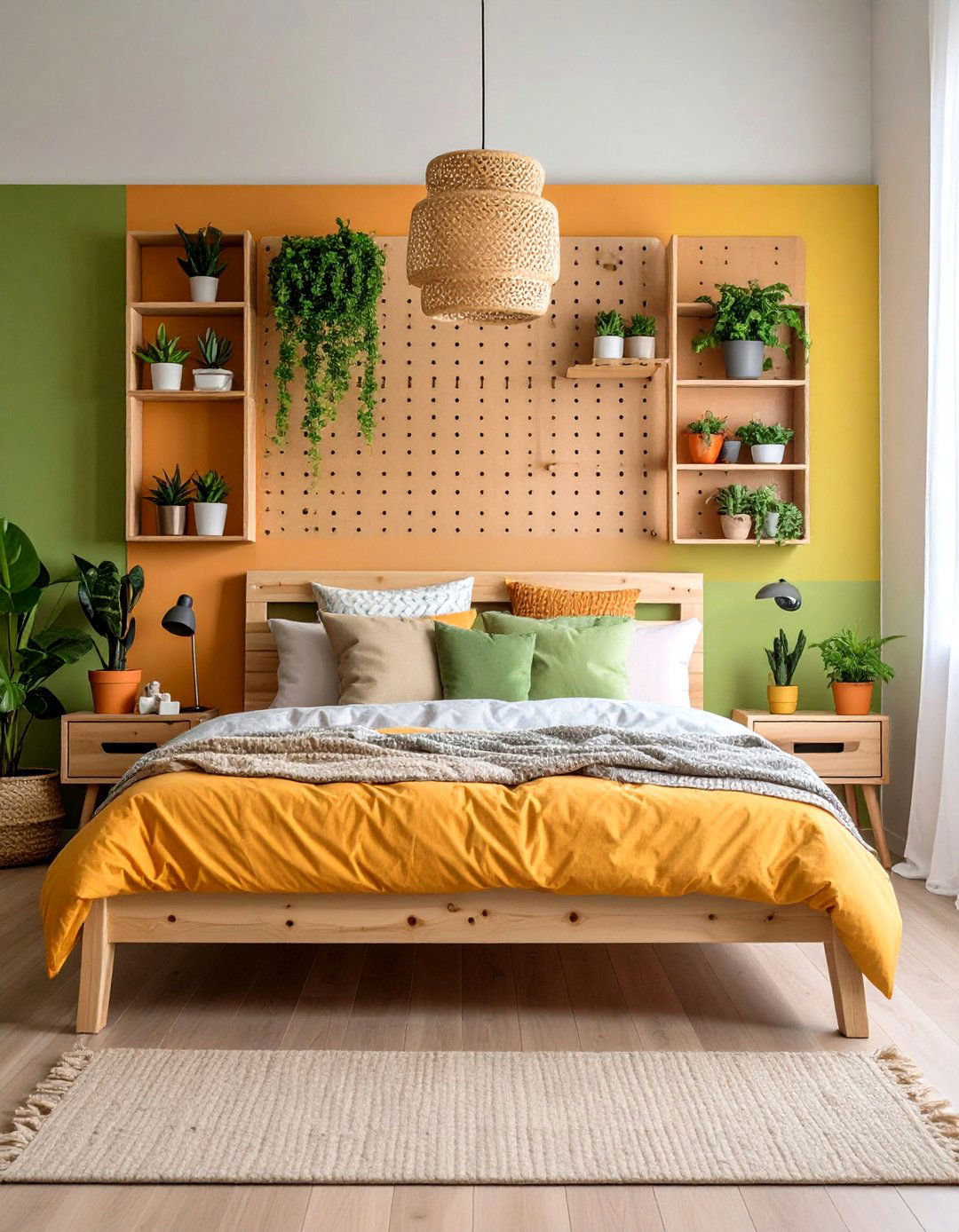
A modular rail or pegboard panel above the desk corrals headphones, notepads, and décor, clearing drawers for clothing again. Arrange hooks in a symmetrical grid to mimic a gallery wall so the functional board passes as art. Clip-on baskets store sticky notes and cables, and magnetic shelves hold succulents to soften the hard silhouette. Because everything sits in arm’s reach, you spend less time rummaging through nightstand drawers, preserving calm during late-night wind-down routines.
17. Bedroom Office Convertible Guest Bed
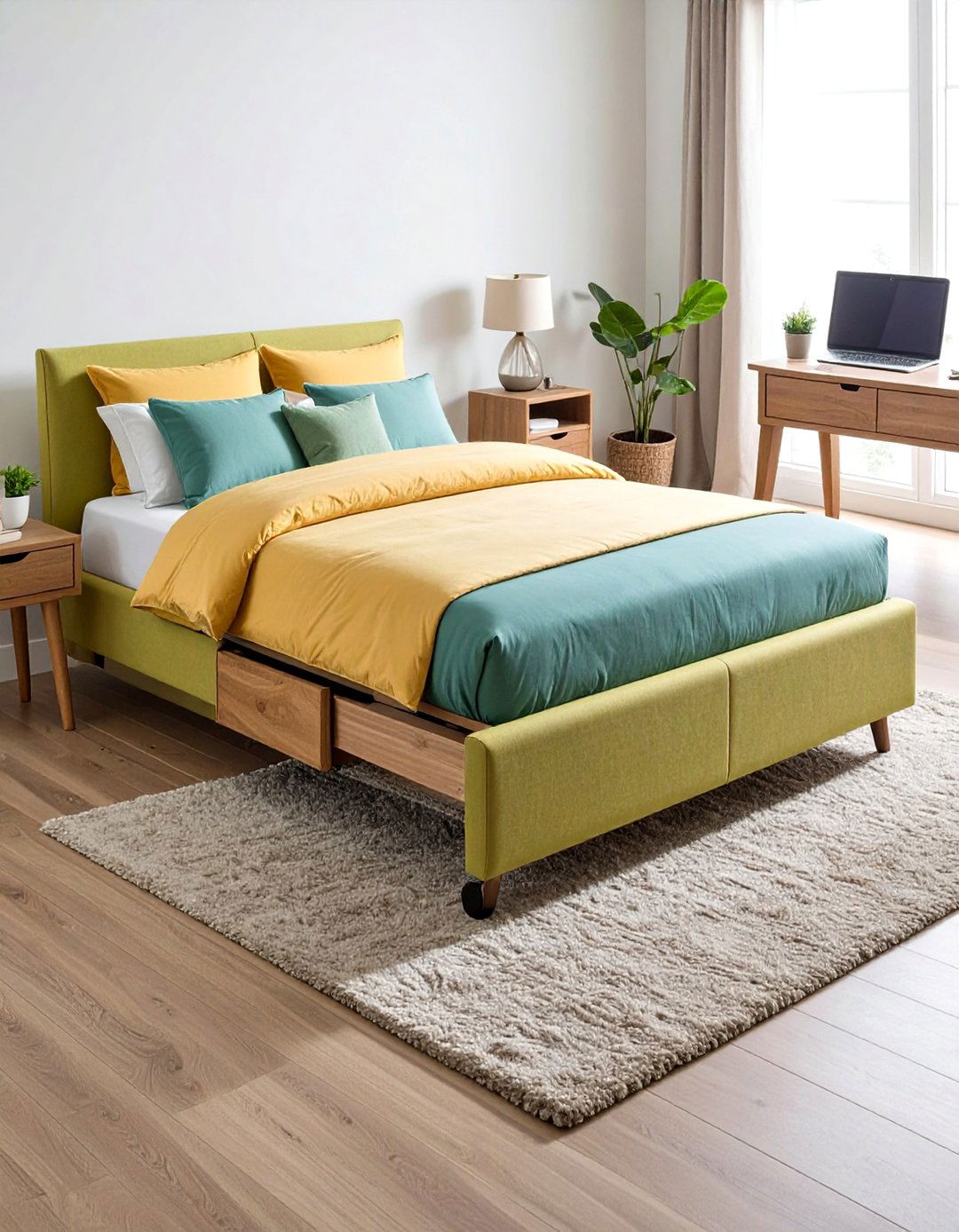
Daybeds, sleeper sofas, or Murphy-style wall frames keep the room ready for guests without sacrificing work square footage. Pair the convertible mattress with rolling under-seat drawers for linens and a trundle that doubles as a printer stand when closed. Choose upholstery in a performance fabric so coffee-shop-level spills wipe clean quickly after a tight project deadline. When visitors arrive, simply stow the laptop in an under-bed box and engage the pull mechanism; the room converts from office to cozy retreat in under five minutes.
18. Bedroom Office Minimalist Clutter-Free Ethos

Experts advise that a visually streamlined room lowers cognitive load, aiding focus and faster bedtime relaxation. Limit surface décor to three functional items—lamp, notebook, coaster—and use a letter-size vertical file for all paper. Colors should not exceed three distinct hues; keep cables hidden and swap knick-knacks for a single framed print above the desk. A microfiber cloth stored in a drawer makes a nightly wipe-down ritual quick, reinforcing the clear-space-clear-mind principle.
19. Bedroom Office Hidden Mini-PC Solution
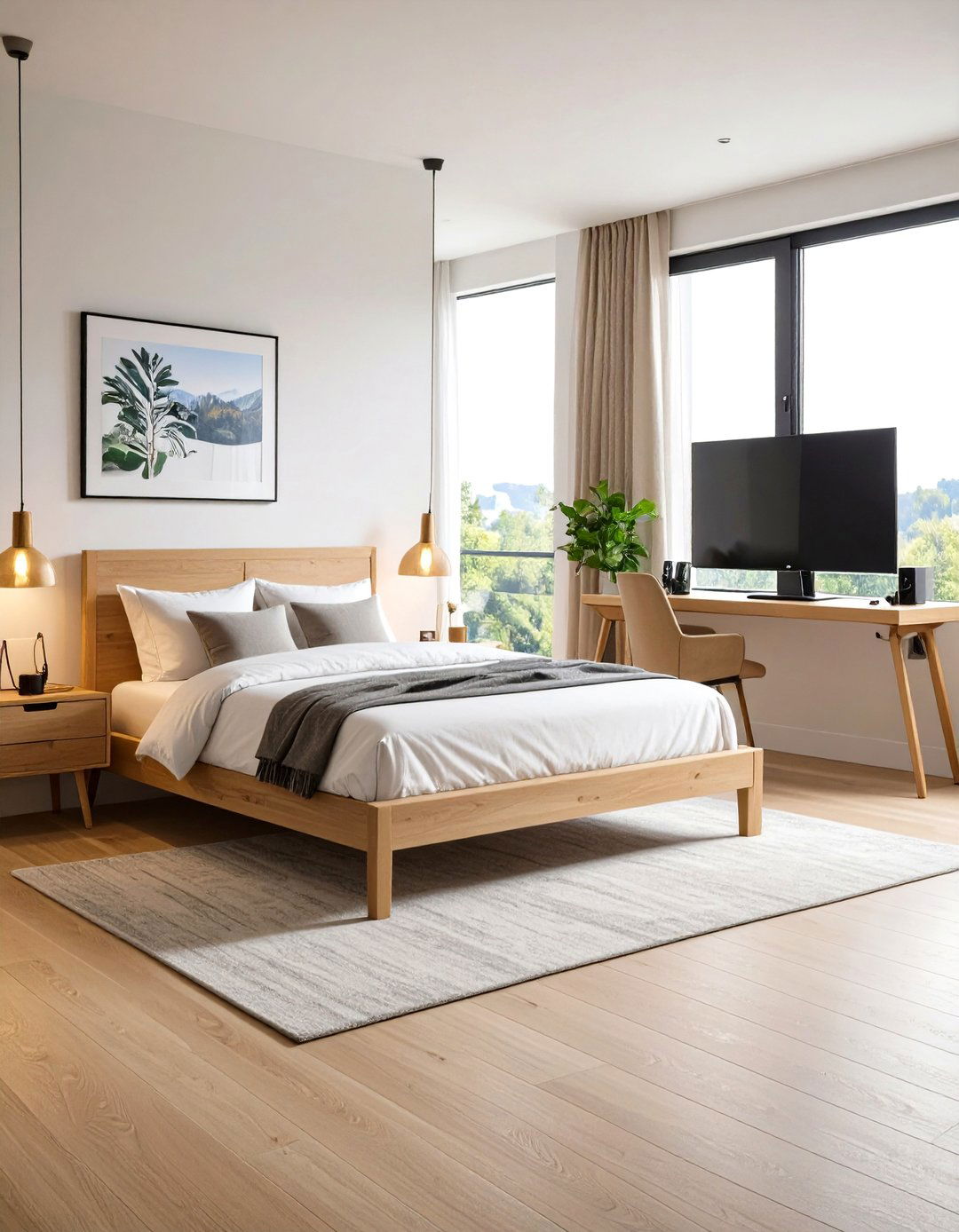
Mounting a palm-sized computer inside the desk’s built-in tray or cable channel removes bulky towers from view and cuts fan noise that can disturb sleep. Most units accept VESA brackets, letting you fasten them behind the monitor arm; route an HDMI switch so you alternate between work device and streaming box without unplugging. The result is an unbroken desktop plane suitable for journaling or breakfast, maintaining the tranquil bedroom aesthetic while still delivering high performance.
20. Bedroom Office Mood-Board Inspiration Wall

Placing an oversized pinboard or DIY plywood vision board at eye level turns random ideas into curated décor and fuels daytime creativity. Cover the board in linen that echoes the bedspread, and pin fabric swatches or motivational quotes along the outer edges, leaving the center for project roadmaps. Lean the board against the wall for easy repositioning; French cleats can secure it permanently if preferred. Keeping inspiration in one framed area prevents sticky-note creep across bedroom walls, preserving calm while still sparking imagination.
Conclusion:
A well-designed bedroom office balances efficiency with rest: space-saving furniture, smart zoning, soothing colors, hidden tech, and plenty of organization make the same square footage handle two distinct roles with ease. Use any combination of the twenty strategies above to craft a workspace that supports deep focus by day and effortless unwind by night, proving that productivity and tranquility can coexist beautifully in one room.



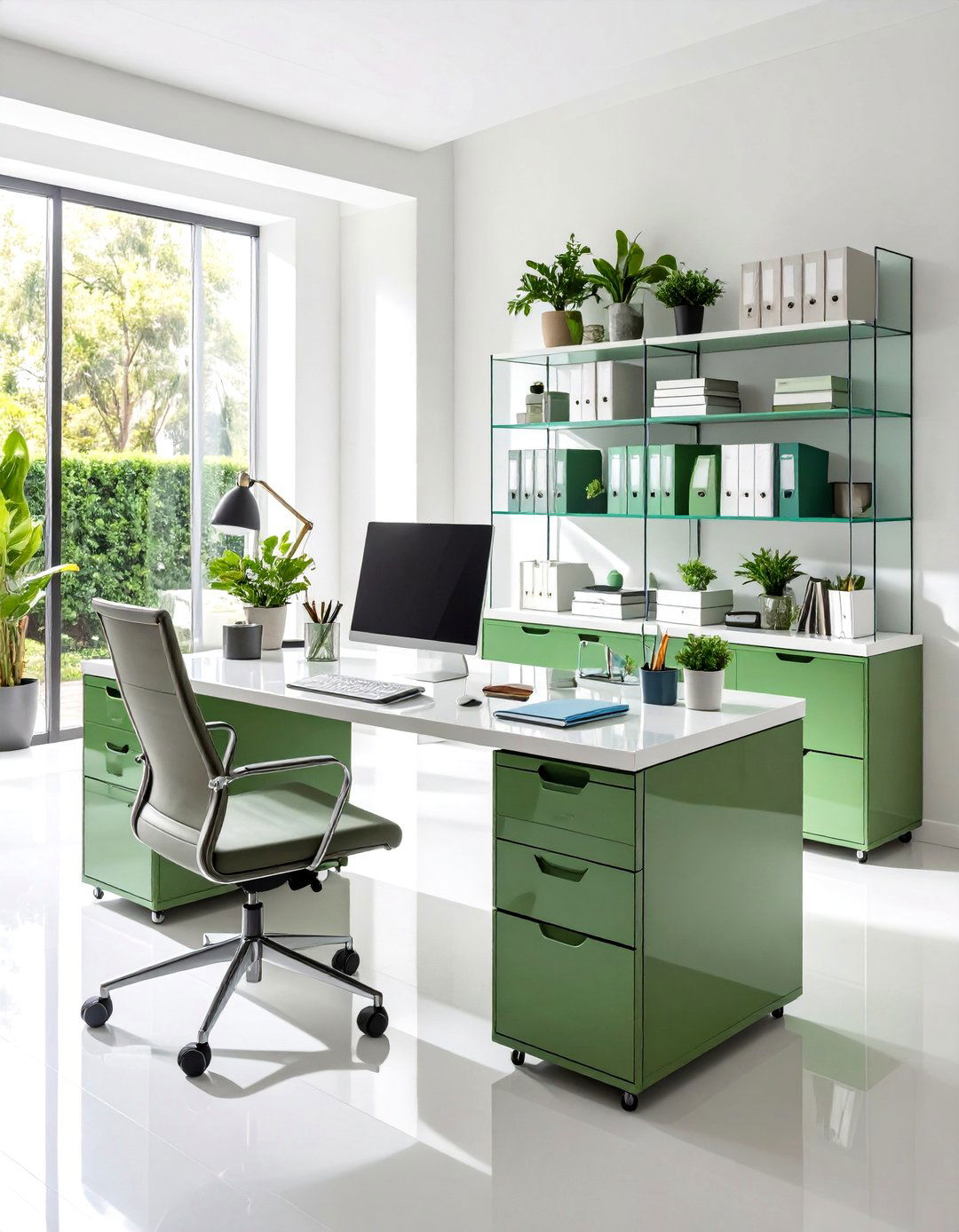
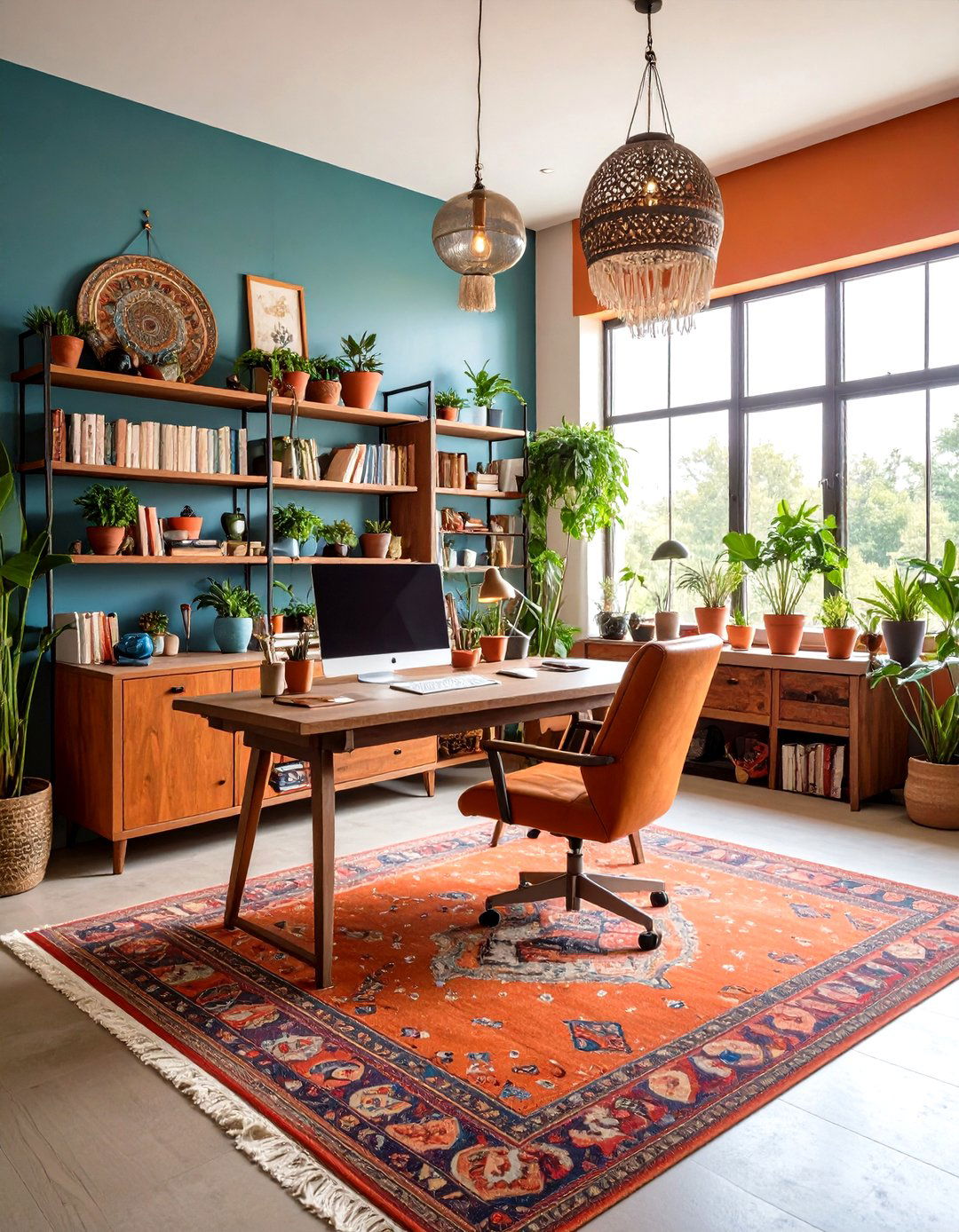



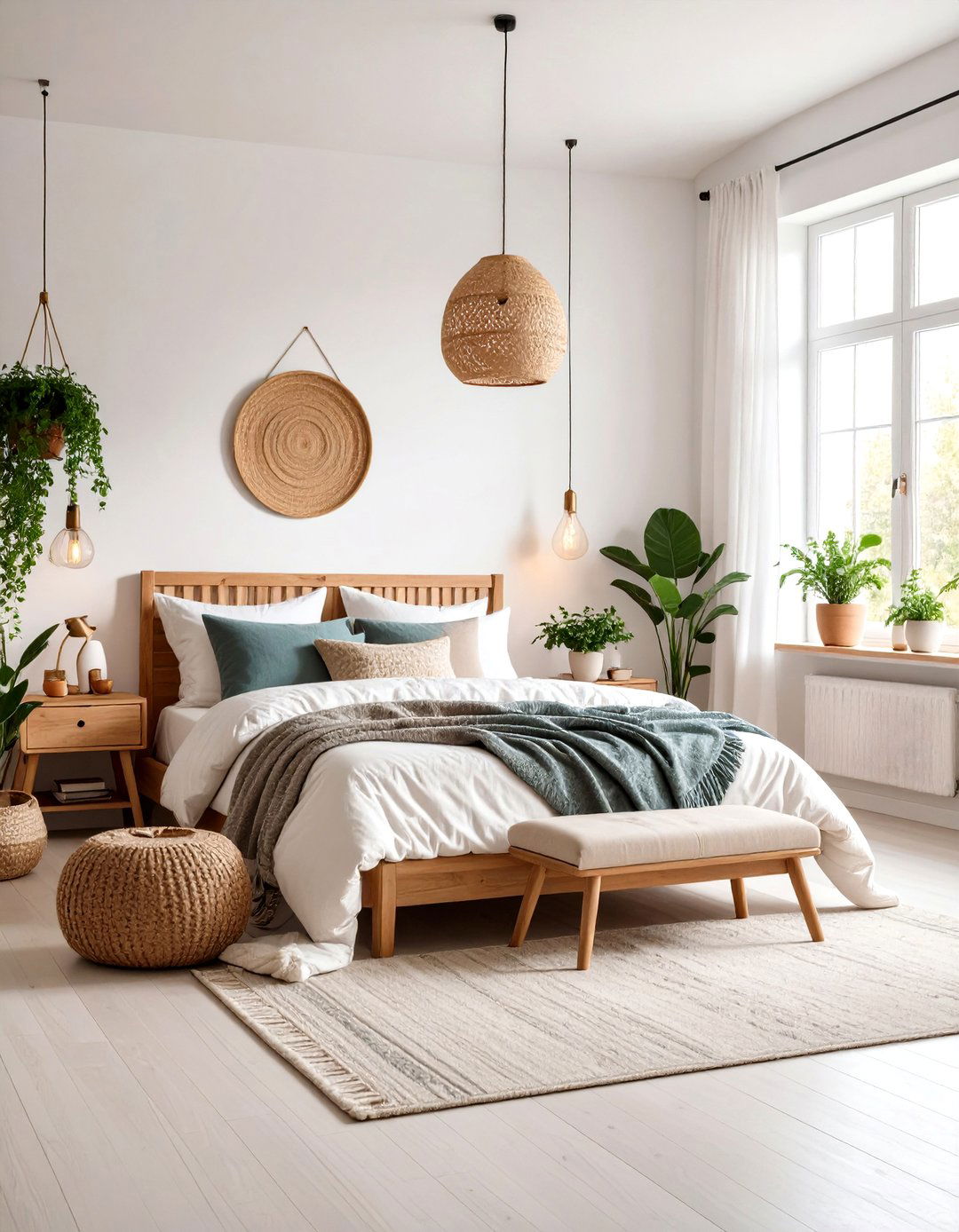
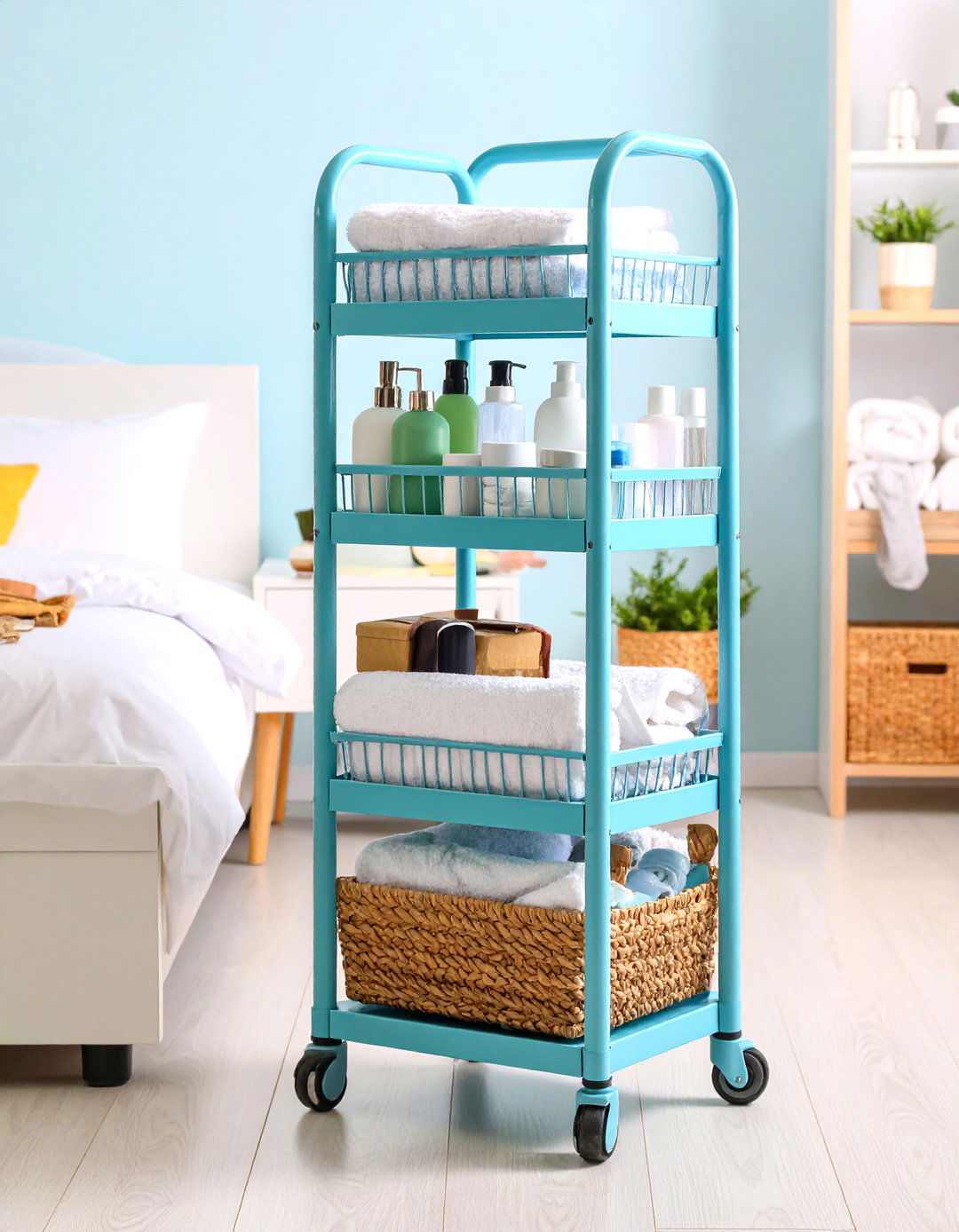



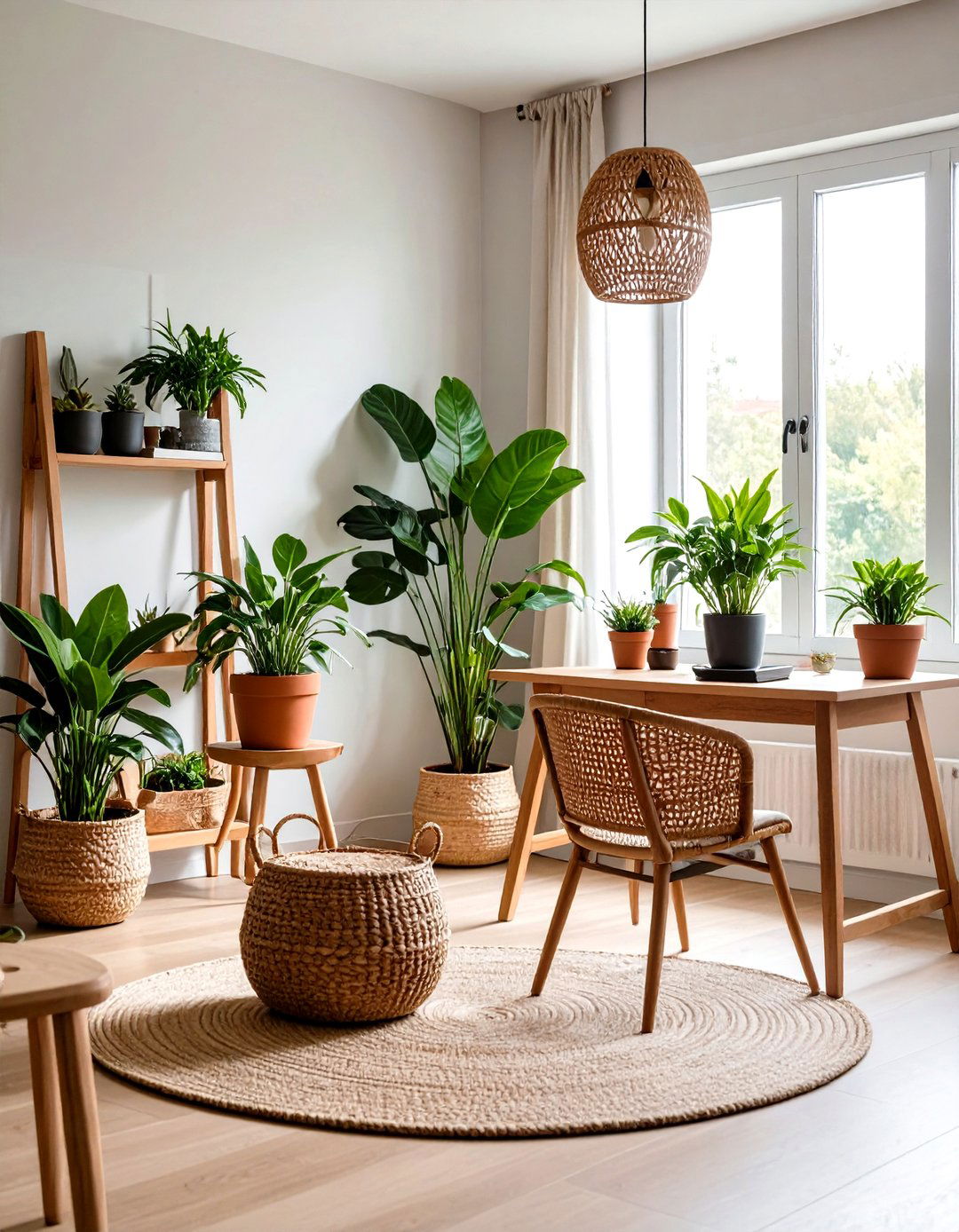
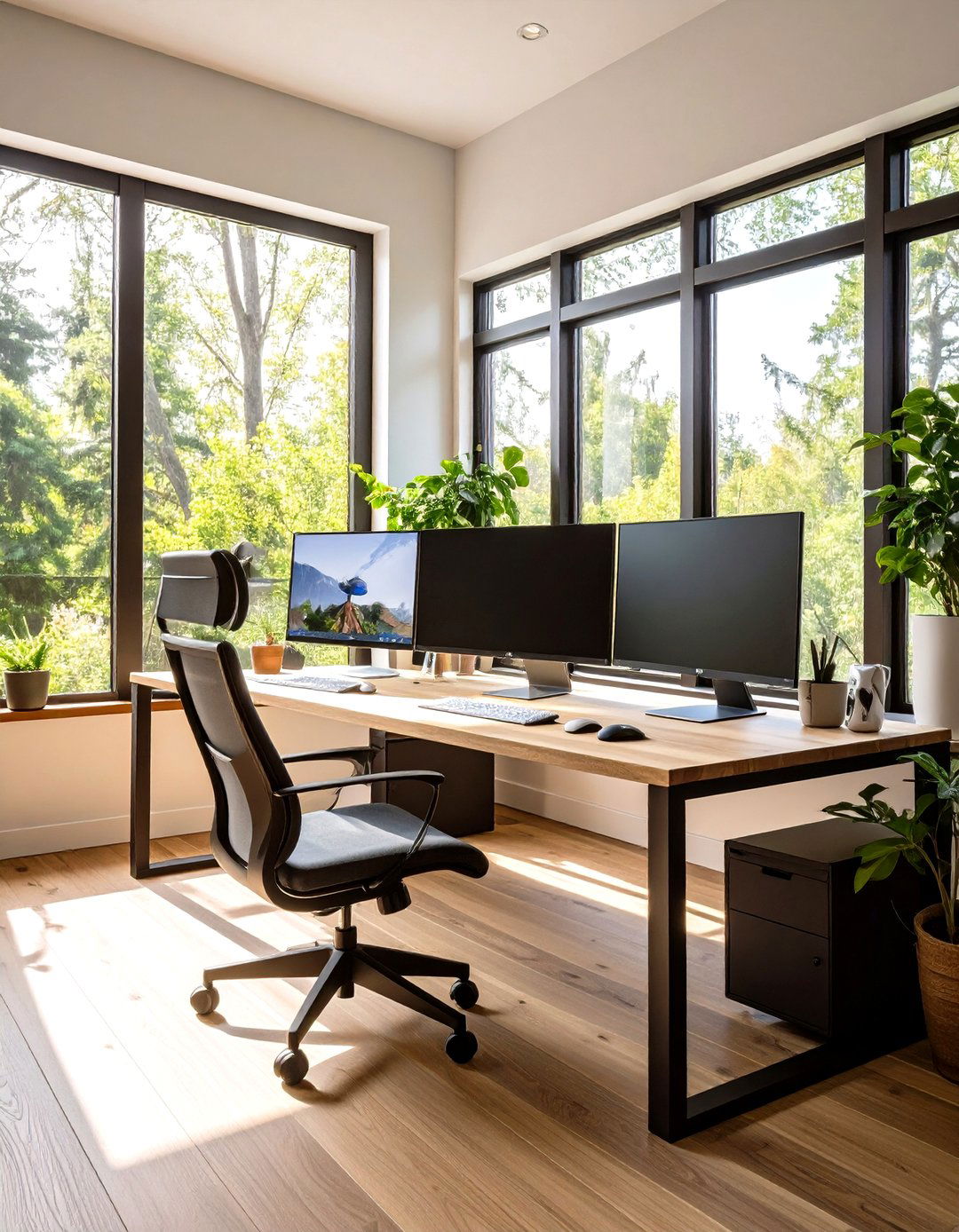
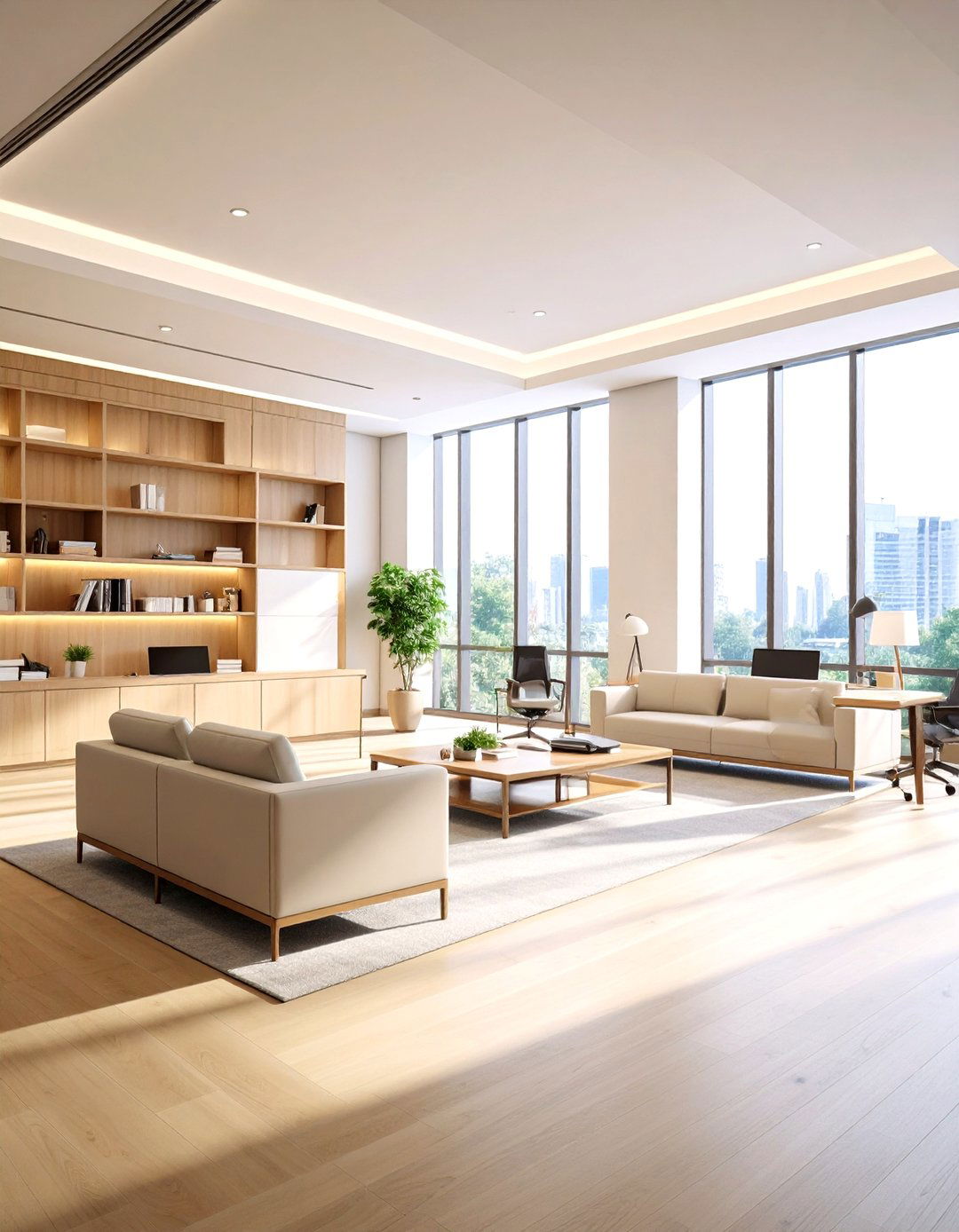
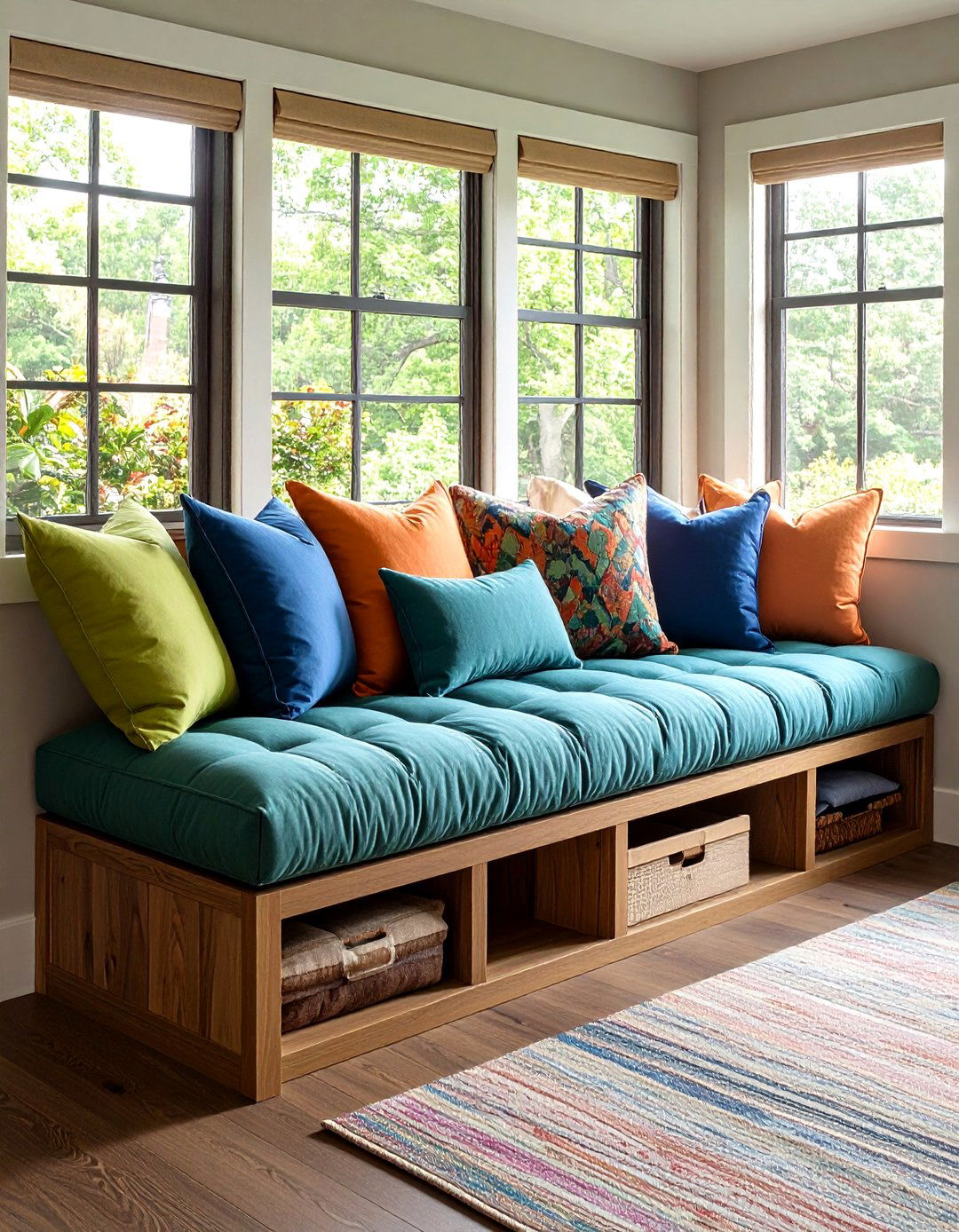
Leave a Reply